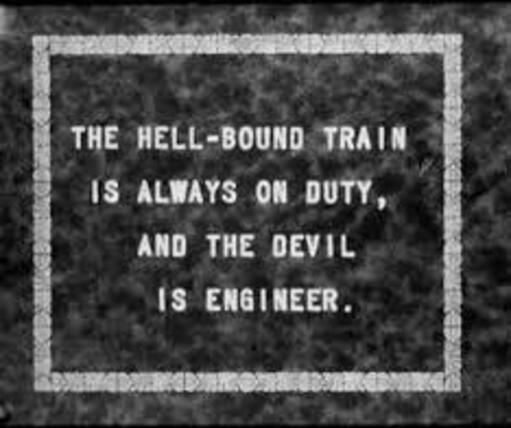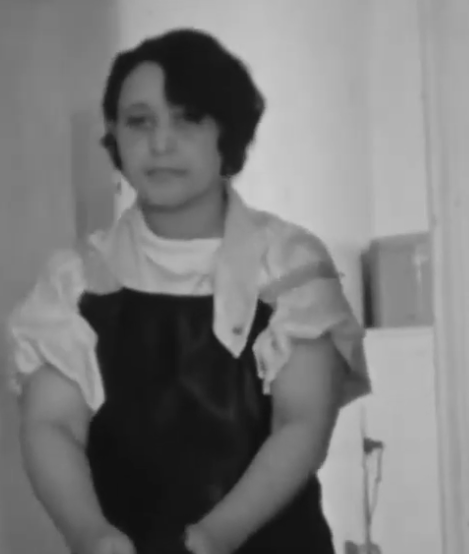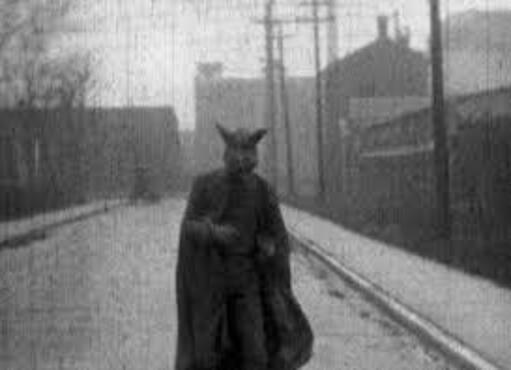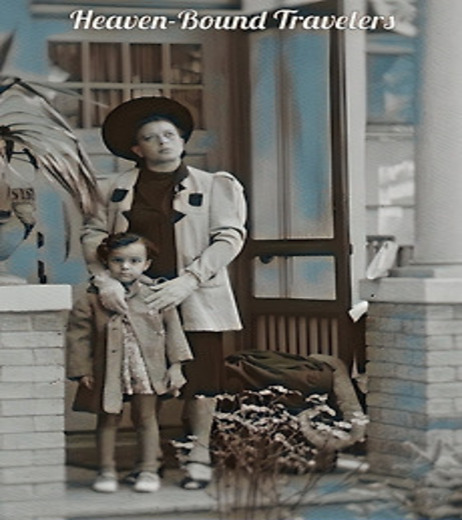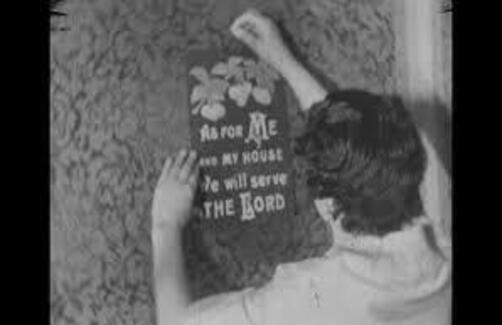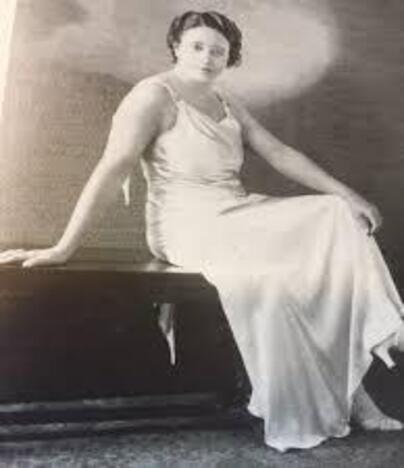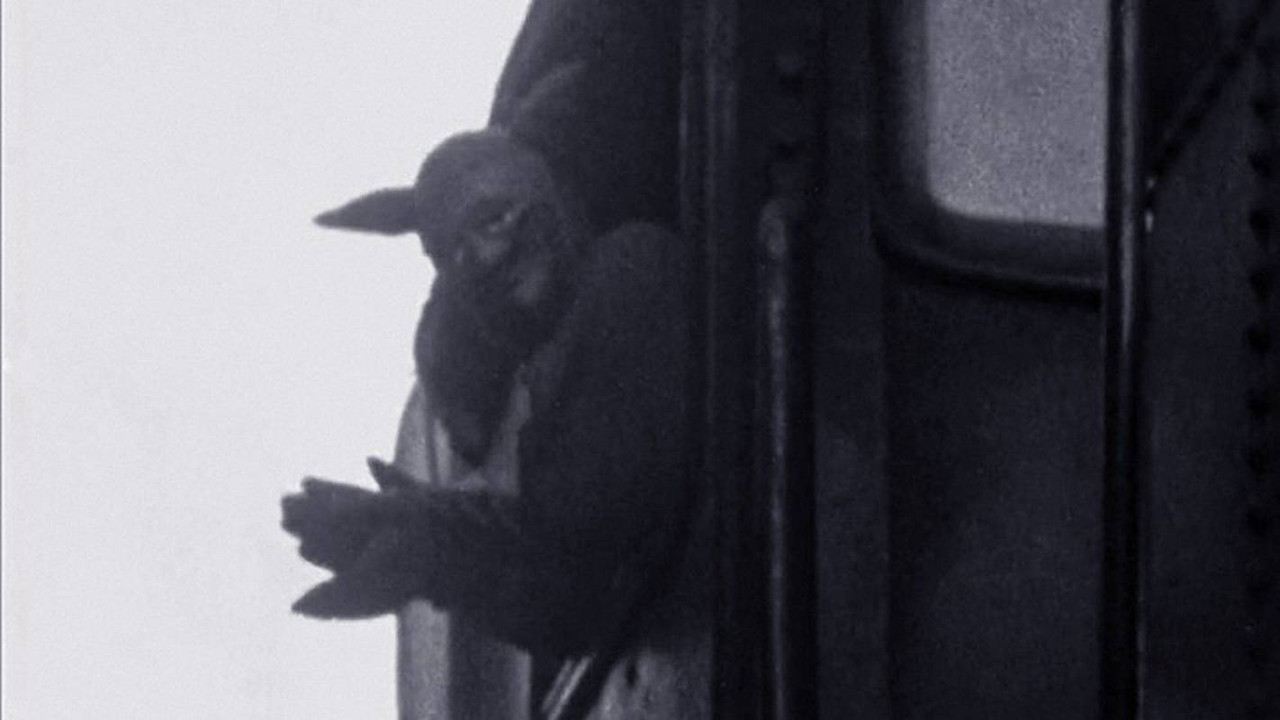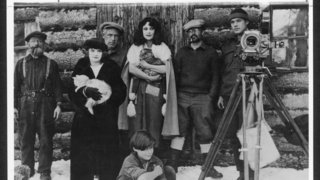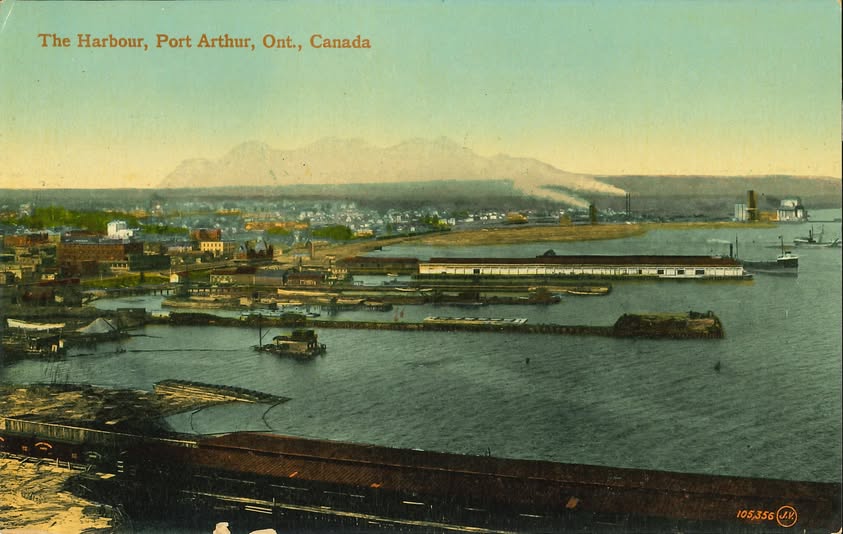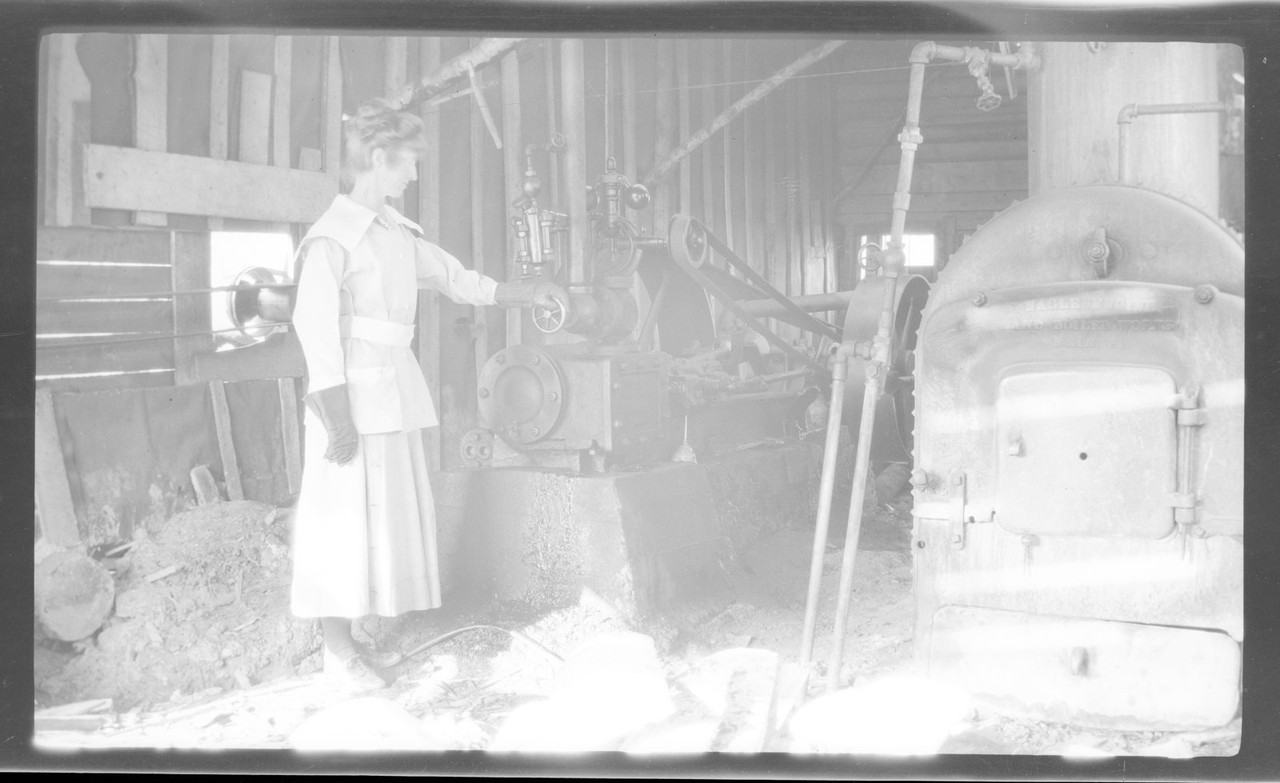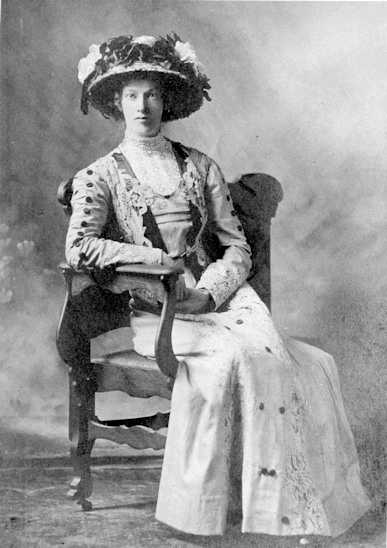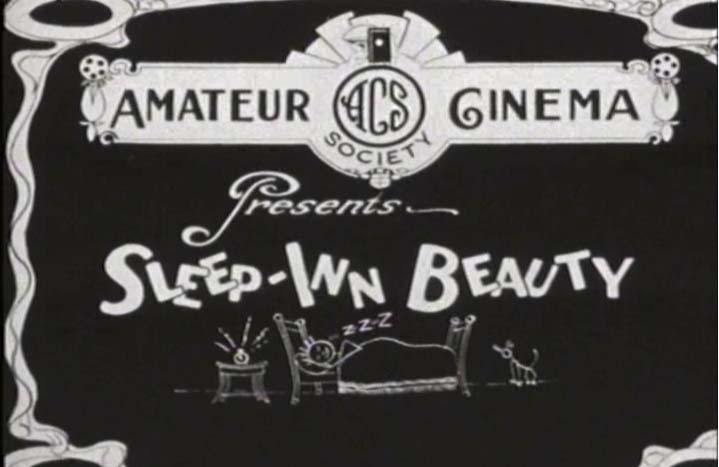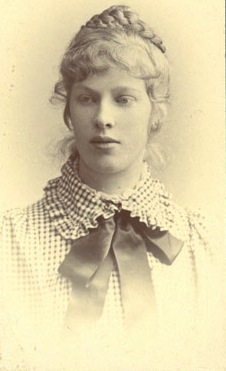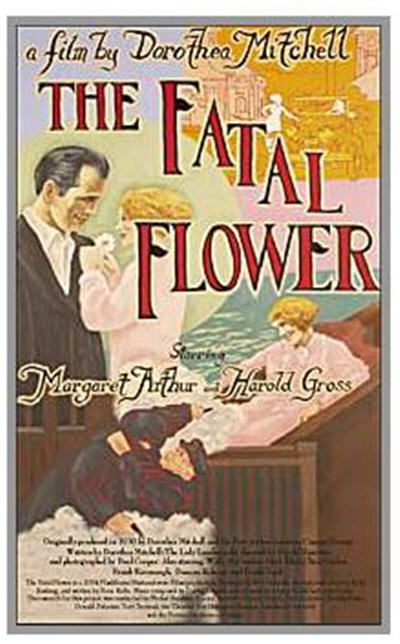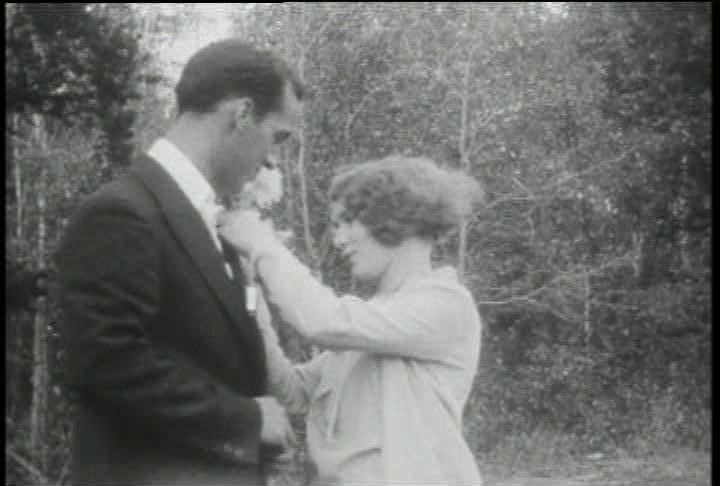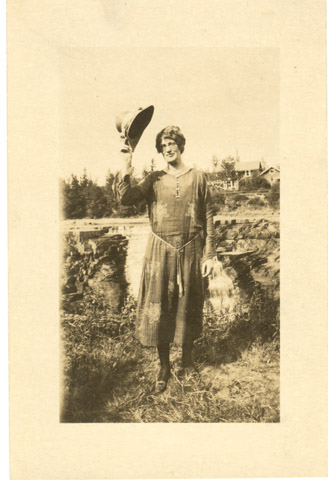
Reading any standard film history of the silent era one would easily get the idea that the early days of film were limited to America, some parts of Western Europe, (specifically France, Germany, Italy, Sweden, Denmark and the UK), the USSR with an occasional side trip to Japan, maybe China and possibly the briefest of mentions of a few other countries like Canada, Australia and Norway and that's about it. This leaves aside the entire continent of South and Central America and it's hundreds of millions of people. While Latin America was not a major producer of films in the silent era by no means does this indicate that no films were made or that were none of any historical, artistic or especially cultural interest.
Given the sheer size of the Latin population, the fact that most people spoke the same language (except Brazil) and had basically similar (but not always the same) cultural touchstones coming from their shared Spanish-Catholic heritage, Latin America could potentially have been a major film producer completely outside Hollywood or Europe in the way that Bollywood would later become but any such chance was hampered by several factors. Most if not all of these nations were plagued by chronic problems; political instability, sometimes including coups and revolutions, governments that were uninterested in film or were censorious, further censorship from the powerful Catholic Church, the poverty of many of its people, largely rural populations in most countries, lack of proper infrastructure and technically skilled people and a shortage of possible investors to start studios. If the various countries had been able to pool their resources and work together the potential audience would have been massive but here again regional rivalries interfered with some countries engaged in bitter border disputes that occasionally flared into shooting wars (usually mercifully brief) along with restrictive trade policies. Over all of them was the cultural and economic dominance of America and to a lesser but real extent, Europe.
Film came to Latin America the same way it came to many countries, via travelling film shows from America or Europe (especially the French Pathe Studios) who brought their usual collection of comedy shorts and Actualities as early as the 1910's to some of the big cities and eventually including some locally shot Actualities and newsreels of local officials. By the time World War One rolled around with Europe preoccupied and in some ways blocked from access there was an opening for locally produced films representing cultures notably different from those shown on screens in America and Europe even if almost none of this would ever find its way to the outside world.
===========================================
MEXICO;
Mexico would have been an obvious nation to develop a domestic film industry given the size of its population, several very large cities, relative engagement with the outside world and its close proximity to America. However this was always a double edged sword as late nineteenth century Mexican strongman President Porfilio Diaz (in power from 1876 to 1911) would famously say; "Poor Mexico, so close to America, so far from Heaven". And relations with America would be hostile throughout the 1910's and 20's, even flaring into near war more than once as US troops violated Mexican borders in search of bandits or to interfere in Mexico's chaotic politics. From 1910 through the 1920's Mexico was wracked by a series of bloody revolutions, coups and civil wars which paralyzed the countryside although Mexico City itself was largely left intact. The attitudes of the various governments of the time varied. President Diaz recognized the propaganda power of the new medium and encouraged the first newsreels, even appearing in one with US President Taft and another of him exiting a train although the latter footage is shot from so far away (possibly due to Diaz being afraid of assassination) that all you can really see aside from Taft are officials loitering about.
EL PRESIDENTE DIAZ MEETS PRESIDENT TAFT (1907);
However some later governments, embattled by constant strife and an on-and-off Civil War through the 1920's were even more censorious. By 1913 the Mexican government (pushed by the Church) adapted a film code banning content deemed to be offensive or immoral. This was obviously similar to the notorious Hollywood Film Code of the 1930's but more sweeping and mandated by the government and even occasionally by violence if one of the various rival private armies roaming about at the time were outraged by a film and decided to shoot up the screen.
Besides the standard Actualities and Newsreels the first Mexican non-fiction film also became the subject of unwitting controversy. "Un duelo a pistola en el bosque de Chapultepec" (1896) was a recreation of a fatal pistol duel lasting only thirty seconds and was no different from any number of similar films produced by Edison or Pathe at the time showing robberies, assassinations or executions and was not particularly notable but some viewers assumed it was another Actualitie and showed an actual murder and in effect the first snuff film leading to official inquiries.
"UN DUELO A PISTOLA EN EL BOSQUE DE CHAPULTEPEC" (1896);
Major film influences on Mexican filmmakers would obviously come from Hollywood with various genres being popular including Westerns, cliffhangers and comedies with another influence being from Italy. Italian romances, comedies and historical epics had the benefit of coming from a fellow Catholic and politically conservative country (and thus largely acceptable to the Church), some vaguely similar cultural attitudes as well as being a far away country with little history of colonization, economic exploitation or gunboat diplomacy with Latin America unlike the United States, the UK or France. A few films from Catholic Spain and Portugal also made their way but these countries made too few films to have much of an impact. With the start of the Great War exports from Europe dried up leaving an opening for local cinema to develop.
Given that Mexico is large country next door with a colourful culture and a seemingly endless story (at least at the time) of tragedy and drama one would expect that Mexico would be an obvious subject for American films and there were several films mostly featuring stereotyped Banditos, passionate revolutionaires, hot blooded Senoritas and the occasional Bullfighter. This includes some topical films with specifically Mexican settings, story and characters.
THE JOAN OF ARC OF MEXICO (1910);
Directed by George Melford and set in the Mexico of the 1911 Revolution stars Jane Wolfe as Senorita Talamantes, a wife whose husband and sons are suspected of being revolutionaries, arrested and executed without trial by a government Army officer. She then goes on to lead a rebellion which seizes control of their town then arrests and executes the officer. The film implies it's based on a true story and there was indeed a woman known as the "Mexican Joan Of Arc" who supported the Revolution but her name was Teresa Urrea and was more of a social worker and feminist and the entire story is a fantasy that probably would have left any actual Mexican viewers puzzled. Note that while the Talamantes family here are wealthy landowners rather than the ragged peasants and banditos we normally associate with the Mexican Revolution the original 1911 Revolution was led by Madero from the respectable liberal middle class.
The film appears to have been shot in the Southwest so it at least looks authentic although there is a scene showing the streets of town which while appropriately dusty also noticeably have all the store signs in English suggesting they shot the film on a set normally used for westerns and either forgot to change the signs or were in such a hurry that they simply didn't bother which was not all that unusual at the time. The film was produced by the Kalem Company and was directed by George Melford who would have a long career with over two hundred films to his credit including Valentino's "The Sheik". The evil officer was played by Carlyle Blackwell, a well known leading man of the era who also had a long career including an odd specialty of playing aristocratic Mexicans several times due to his dark good looks. He would later move to Europe and appear in films in the UK and Germany including playing Sherlock Holmes. Nobody involved with this film appears to have actually been Mexican however unless they were bit players or behind the cameras.

PANCHO VILLA
Undoubtedly the most famous, or infamous, Mexican based film of the first era was not really a Mexican production at all although it did star Mexico's most famous or infamous person. "The Life Of General Villa" was an American production backed by DW Griffith purporting to be about the Revolutionary leader and bandit Pancho Villa, played at times by American actor/director Raoul Walsh and at other times by Villa himself. Note that although his Latin name may have helped him get the gig his real name was Albert Edward Walsh and he was not actually Latino at all. The scenes starring Pancho included battle scenes in which the camera crew went along with Pancho and his guerilla fighters as they fought actual battles with government forces and included real combat footage. Director Christy Cabanne's commitment to realism was so intense that he was even able to convince Villa to stage his raids in ways that were easier to film to the extent of insisting on daytime instead of nighttime raids and dictating that attacks be staged with the best sun and cloud cover. Ironically viewers found the film unconvincing and it was not a success in America and given Villa was at war with the Mexican Government it could hardly be seen in Mexico itself. In 1916 Villa attacked across the border sacking the New Mexican town of Columbus, New Mexico killing more than a dozen people in an attempt to provoke the Americans to invade Mexico and overthrow the Government. Instead the US Army did indeed cross the border but spent fruitless months chasing Villa's guerillas. After that there would be even less American appetite for a film about the Bandit Villa who was no longer seen as a hero and any remaining film copies were destroyed and this is considered a lost film. Pancho Villa himself would be assassinated in 1923 and the story of this unique film was portrayed in the 2003 film "And Starring Pancho Villa As Himself" starring Antonia Banderas. Some footage of Villa and his forces at war does exist and some of it may even be left over from this film as it includes some obviously staged battle scenes along with some probably authentic scenes of dead bodies and shots of troops milling about and riding trains. It also shows the limitations of such footage as the battle scenes are confusing and impossible to figure out who is who so it's little wonder why the film was considered a failure at the time. There is also footage of his sometime ally Emiliano Zapata and his Zapatista Army on the march on Mexico City around the same time.
FOOTAGE OF PANCHO VILLA & HIS ARMY IN ACTION ALONG WITH THE ZAPATISTAS ON THE MARCH (circa 1916);
Some of this footage is genuine but some is clearly staged and while likely not from the infamous Pancho Villa film it probably does show what that footage might have looked like. Setting aside the historical value of the Villa sort-of doc, another 1917 film would be the first to have distinctly Mexican and Latin American themes in a film that could truly only have come from Latin America.
"TEPEYAC" (1917);
Directed by Carlos Gonzalez & Jose Manuel Ramos
This plot of this film uses a modern story as a bookend for an extended portrayal of a religious legend of a vision of the Virgin Mary which is believed to have appeared to a group of Native Mexicans in the sixteenth century at an isolated place called Tepeyac in Guadalupe. In the legend Mary cures one native of illness and another of a fatal arrow injury, performs some other miracles and asks for a church to be built. After some reluctance the Catholic Church recognized the vision as a miracle and the Vision of Tepeyac is considered sacred to Mexican Catholics especially those of Native heritage. The film uses contemporary events around the Great War then raging in Europe (although Mexico itself was neutral) as Carlos, a Mexican diplomat on his way to Europe has his ship torpedoed by a German U-Boat and he is considered lost. Back home Lupita, his young fiancee (who had given him a holy medallion with the Virgin Mary's image) receives the news via telegram and prays to the Virgin Mary. That night she falls asleep while reading a book about the Virgin and has a dream about the original sixteenth century appearance. At this point he movie switches to her extended dream sequence as we see the original events as while on their way to an Indian pagan ritual a group of Indians stumble on to a group of Spanish Conquistadors and they ambush one of the stragglers from the column who they take off back to their underground temple for human sacrifice. Discovering the missing man the Spanish give chase and discover the Indian temple and prepare to attack until the Friar accompanying them intercedes between the groups and persuades them to lower their weapons and the Indians agree to be baptised. We are then taken to the native village where they farm some sort of marsh plants. One day Diego, one of the Natives, while walking in the hills has a vision of the Virgin Mary who tells him to visit the local monastery and tell the Bishop to build a church at this site. The Bishop does not believe him and dismisses him ordering that he be followed as he returns home. As he does so his trackers lose sight of him when he enters the grotto where a statue to the virgin now stands and they report back that Diego is a fraud. When he returns to the village he discovers his father is deathly ill and goes off in search of medicinal herbs to no avail. Later at the lakeside Diego once again sees the Virgin who tells him to take some roses that will cure his father and then to return to the Bishop and again tell him of her command to build her a church at the site. This time when Diego visits the Bishop his robe is opened to reveal a painting of the Virgin and he tells him of his father's cure. The Bishop now believes the miracles and commands the church to be built. Back in the present Lupita wakes from her dream to get a telegram from her fiancee informing her that he is fine and on his way home. One his return they visit the shrine at Tepeyac to give thanks to the Virgin. While there they witness a festival and church parade in honour of the Virgin and visit the cathedral. Finito.
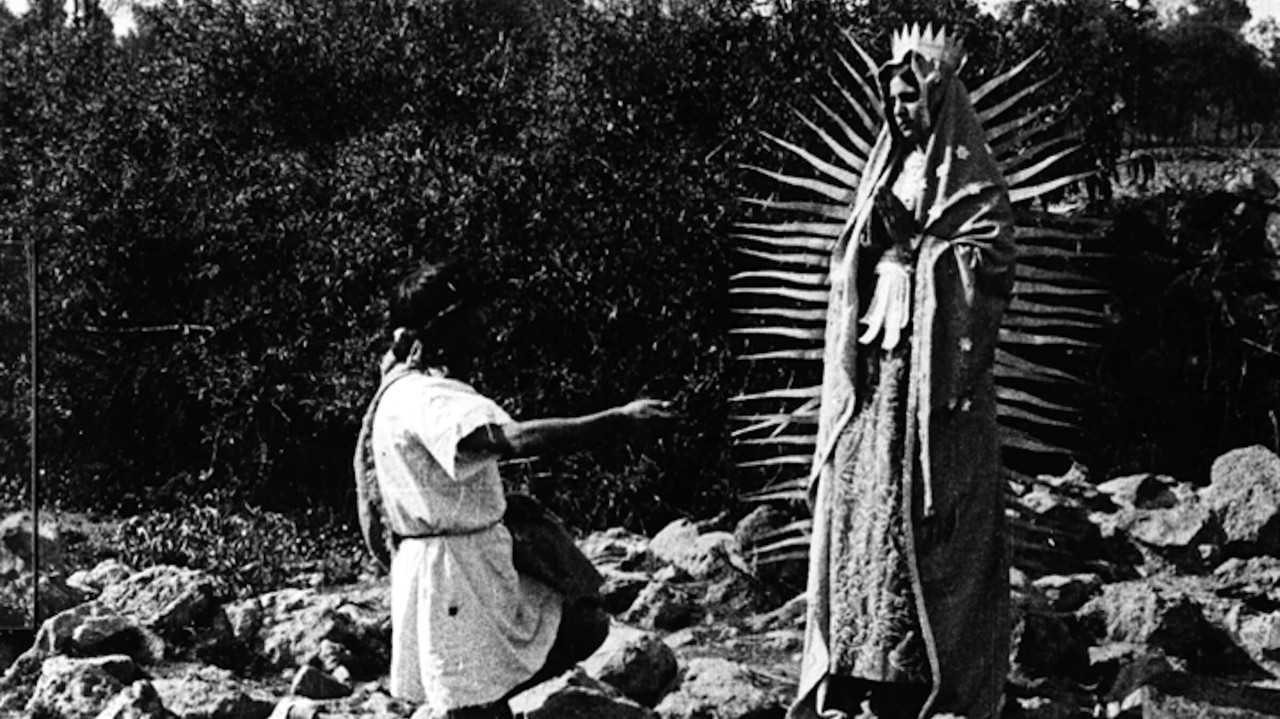
~~~~~~~~~~~~~~~~~~~~~~~~~~~~~~~~~~~~~~~~~
"Tepeyac" may have been uniquely Mexican but that doesn't mean it was representative of contemporary Mexican films as a whole the majority of which are the same sort of action films, romances and comedies common to other countries albeit with some notable Mexican elements. By the twenties were international Mexican film stars but they became so by moving to Hollywood and included the likes of Roman Novaro, Lupe Valez, Lupita Tovar, Dolores Del Rio and Gilbert Roland. However even before the Great War the Alva Brothers had started their own studio and were while producing mostly newsreels they also started making proper feature films with the half hour comedy "El aniversio del fallecimiento de la suergra de Enhart" (AKA "The Anniversary Of The Death Of Enhart's Mother-In-Law"). Mexico's first film star would come in 1917 when stage actress Mimi Derba started Mexico's first proper film studio with Azteca Studios which produced a few films until about 1919 including such titles as "La Tigress" and "En Defensa Propia" (both in 1917) which still exist in fragmentary form.
"EN DEFENSA PROPIA" & "LA TIGRESSA" (1917, fragments);
Both films were romantic melodramas similar to films being made in France and Italy with "En Defensa Propia" appearing to be more of a comedy with Derba starring as an orphan who works as a maid for a wealthy widower who falls in love with her who she wins over so they marry which his family tries to break up leading to confrontations at a fancy party where their hypocrisies are revealed. "La Tigressa" is darker with supernatural elements as Derba plays an actress involved with a complicated romance in which the man ends up being driven insane and having hallucinations where the scheming Derba is transformed into a raging tigress stalking him. Reading the description of this intriguing film makes it sound like a Theda Bara film as shot by a German Expressionist and would be fairly advanced for a 1917 film and it would be fascinating to see what it actually looked like in practice. The Pancho Villa film is considered to be the most important lost film of Latin America due to its historical relevance but artistically it was not considered noteworthy even at the time however in purely artistic terms "La Tigressa" sounds like it may be more interesting if it ever surfaces.
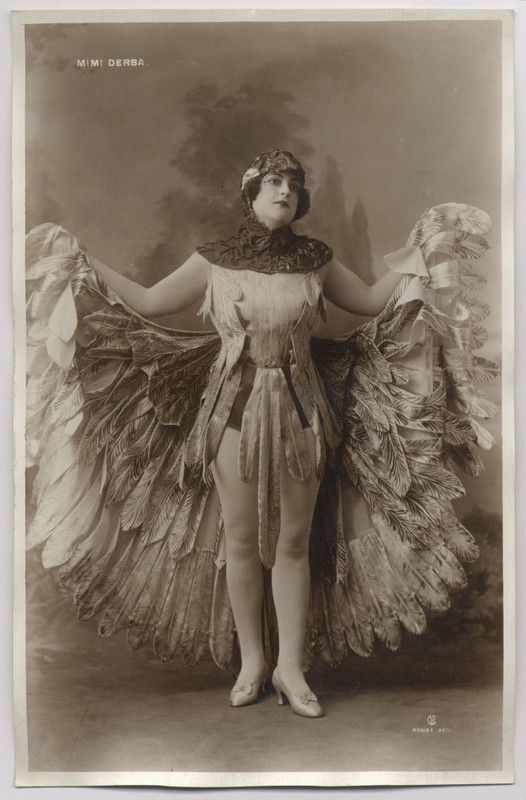
MIMI DERBA
Mimi Derba (1893-1953) was a major star on the Mexican stage as a singer and a founding member of the first actors union not only in Mexico but possibly anywhere. Unlike most stage actors she was quick to spot the potential of film becoming not only an actress but an early screenwriter, director and producer. Producing at least four films in 1917. Azteca Films however struggled financially, unable to find a sizable audience in a Mexico still largely poor and rural and wracked by political violence and with few export markets. However in 1919 Derba and Azteca decided to roll the dice with their most ambitious film yet; a version of the type of crime serials then popular in France such as "Fantomas", "Judex", "Belgaphor" and "Les Vampires" with their own multi-part crime serial "El Automovil Gris" (AKA "The Grey Automobile").
"EL AUTOMOVIL GRIS" (1919);
Directed by Enrique Rosas
Plot synopsis (spoiler alert); Based on a true incident in 1915 where a group of outlaws committed a series of home invasions disguised as police and making their escape in the latest in technology, a grey motorcar. The gang are not only brazen, operating in broad daylight, but also ruthless, kidnapping and beating their victims. One wealthy elderly man is threatened with a firing squad to get him to give up the location of jewels. Another woman is kidnapped and it's implied raped while at another home invasion a small boy stumbles on to the scene and having witnessed a robbery is brutally chased down and shot dead. The elderly man survives and goes to the police where he discovers one of the robbers is actually a real policeman and the robber is swiftly arrested. Other robbers are hunted down with one being gunned down and others caught in a running battle in the streets. Eventually it's discovered that the gang have a dummy police station complete with a literal dummy sergeant. At this point some of the surviving gang members try to flee on a train out of the city while another is caught in his home with a stash of stolen jewels. One of the ringleaders flees to the city of Puebla where is is recognized. Another turns out to have been living a respectable existence with his wife who suspects he is involved in criminal activity. When the police come for him he resists and she assists him briefly getting the gun off one of the cops before both are arrested. Other gang members flee into the countryside where one is tracked down in a village and arrested. Once the surviving gang members are caught they are tried, convicted and shot by firing squad after one of the prisoners marries his lover. Two of the gang had managed to escape but were eventually caught with one escaping prison before being caught again. The gang's leader manages to avoid being shot and is instead in prison when the film ends.
While this film has obvious precedents in the more famous French crime serials there are notable differences. Firstly it's more violent with bloody gunfights and an implied rape not to mention an execution by firing squad which was actually taken from newsreel footage of an actual execution. Ironically the latter scene is shot in such a detached manner that it's actually less bloody than a scene where a robber is gunned down and lies in the street coughing up blood in a surprisingly realistic scene for its time. There is also footage of an actual cockfight including the gruesome death of one of the birds. This film claims to stay reasonably close to the real story to the extent of not only using real outdoor locations in Mexico City but even casting the actual Police Chief as himself. As if that wasn't enough realism, the actual footage of the execution was previously shot by director Rosas for a newsreel for what must be the first literal snuff film.
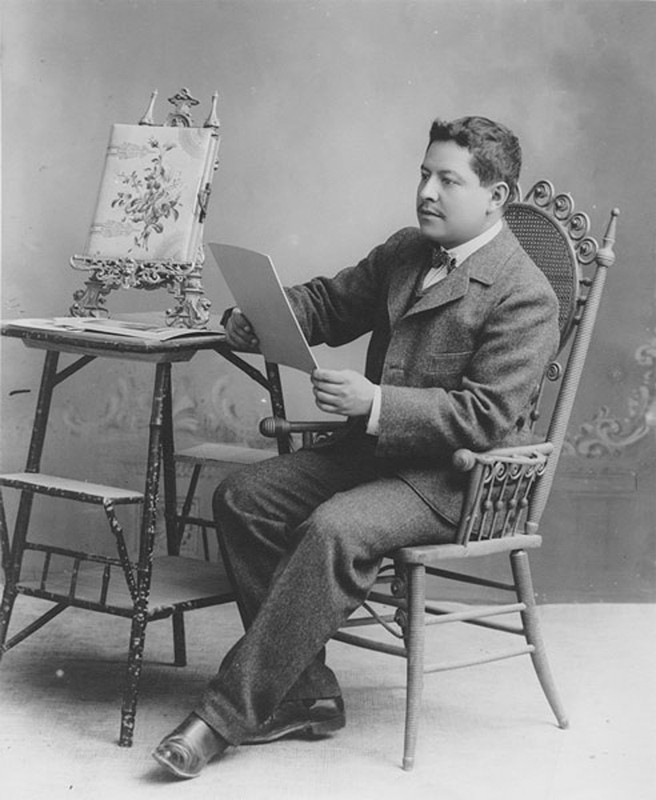
ENRIQUE ROJAS
It should be remembered that by this time Mexico had been subject to almost a decade of revolution and civil war (with another decade to go) with bloody shootouts, public executions and assassinations so it's not surprising if people had become somewhat desensitized to such violence. Conversely some of the other shootouts and chases are more chaste and more resemble the sort of westerns made by Tom Mix, Art Accord, Ken Maynard or Jack Hoxie that Mexican audiences (and filmmakers) were no doubt well aware of. While clearly influenced by the French crime serials this film is mostly a police procedural shot in a straightforward manner without the stylishness or vaguely supernatural elements of the villians in the French serials and their Gothic costumes. In fact with their fake police uniforms the gang here look oddly like evil Canadian Mounties. Another difference is that the outdoors action is clearly shot in the actual streets and alleyways unlike the carefully constructed and controlled sets so beloved of the Germans. This makes these scenes appropriately gritty and grimy although unlike the German "Street Films" of a few years later where those streets were bustling with activity while some of these streets are busy others are largely empty even though all the activity takes place during the day leading to the assumption that Rosas shot using real street backdrops when convenient for some scenes but used empties one for shootouts and chases to show the city as an integral part of the atmosphere. Nonetheless Mexico City and Puebla do provide a distinctively hard edged grungy backdrop and later the film goes out to the rural countryside and a small town which clearly looks distinct from anything seen in an American or European film in its dusty desolation. The firing squad scene is certainly unique as it is actual footage which is clearly noticeable stylistically plus the fact the actual gang members look nothing like the actors who had just been playing them.

ENRIQUE ROJAS
Director Enrique Rojas does have not have the flash of French director Louis Fulaide or the German Fritz Lang who would direct his own crime serials with "Spiders" and "Spies" but he is perfectly competent and most of the individual scenes are easy to follow and don't overly rely on intertitles which is a bonus in a film this long. However the film does rely on several flashbacks (and sometimes seemingly flashbacks within flashbacks) which can be confusing and hard to keep track of. Some of this is not necessarily the fault of director Rosas and is a byproduct of editing that happened years after the fact. As a serial this film was originally six and a half hours long and shown in twelve chapters, however this version has been lost. The serial was revived in the early thirties as a single film with various chapters edited down to a ninety minute feature with most of the original footage being discarded. However in 2012 some of this lost footage was rediscovered and a partially restored version was produced by taking this footage and reediting it back in using surviving script notes and accounts resulting in the current three and a half hour version. Some of these edits can be noticed in scene changes that use dissolves in a way that would not have been used in 1919. While possibly more coherent than the ninety minute version this version still has awkward gaps in the storyline which may or not have been cleared up in the original. Almost the entire first hour is taken up by the gang's robberies which can also be a little repetitive yet we get very little information on the police detectives which may also be in missing reels. By contrast the methodical tracking down of various gang members is also repetitive and probably worked fine as part of a serial where extending the story to fill multi parts made sense but here it drags out the film. The same is somewhat true of the post trial scenes where the prisoners are awaiting their sentence although once again these scenes are at least different from any other film. Here the film should have ended but we get the capture of two more gang members in ways that suggest we are missing key film scenes and the ending is abrupt and not entirely satisfying as the gang leader seems to escape the death sentence for reasons we do not know. Although in Mexico this film is considered a "masterpiece" but part of this is likely due to its sheer size and ambition as the first such epic production in Latin America and it is an interesting entry with some unique features however there are serious issues with the narrative and pacing, at least in it's surviving restored state. This is a rare instance where this film might actually be better off, at least as a coherent narrative, if less of its surviving footage had been restored. However much of a historical loss that might have been the story might have benefited from some judicious editing if the full six hours are forever lost.
Although this film was a success at the time and is now considered the first epic film of Mexico if not all of Latin America and the films of Azteca Studios are seen as historically important the studio struggled financially and this was its last major production with a planned historical epic, "Chapultepec" about the Aztec era, being unfinished. Economic troubles and chronic political instability and violence in Mexico meant that few productions were made in the twenties and Mimi Derba returned to the stage for until the thirties when she returned to the screen and continued working until her death in 1953 aged only 59. Her first talkie role would be a supporting role in Mexico's first sound film in 1931's "Santa" which was in turn a remake of a popular 1918 silent film which does survive.
~~~~~~~~~~~~~~~~~~~~~~~~~~~~~~~~~~~~~~~~~~~~~~~~~~~
"SANTA" (1918);
Directed by Luis Peredo
CAST;
ELENA SANCHEZ VALENZUELA ~ SANTA
ALFONSO BUSSON ~ HIPOLITO THE PIANIST
RICARDO BELTRI ~ EL JARAMENO, EL MATADOR
Plot Synopsis (spoiler alert); Santa (which simply means "Saint" in Spanish) is a young woman who has an affair with a cavalryman who then deserts her to go off to war. She is rejected by her scandalized family who toss her out in the streets. She then moves to the big city where she turns to prostitution living in a brothel run by Elvira, an old friend, where Hipolito, an older blind pianist falls in love with her. She befriends but him rejects his love and instead takes up with Jarameno, a handsome Matador. However she feels he does not really love her and cheats on him and when he discovers her infidelity he also throws her out. She returns to the brothel and takes up where Hipolito still waits for her even though she tells him that she still does not love him, he does not mind. Santa takes up with Rubio, a drunkard and her own drinking increases and her health worsens until Rubio also dumps her and Elvira kicks her out of the brothel. Seriously ill and with nowhere else to go she moves in with Hipolito and his young son and who promises to take care of her. He finds her a doctor who was a customer at the brothel who tells him that Santa has cancer and needs an operation which he agrees to do although the prognosis is not good. She agrees to the operation but makes him swear that if she dies he will bury her in her hometown cemetery which he promises to do. In the event she does die on the operating table and he then returns her to her hometown cemetery. There are no other mourners but he buys her a large gravestone over which he offers a prayer. Finito.
~~~~~~~~~~~~~~~~~~~~~~~~~~~~~~~~~~~~~~~~~~~~~~~~~
Based on a popular Mexican novel and oddly for what is considered a conservative Catholic country the story is more scandalous in its subject matter dealing with prostitution, promiscuity and alcoholism than than most contemporary American films. While a few films starring Theda Bara, Alla Nazimova, Clara Kimbough Young, Louise Glaum or the European films of Asta Neilsen dealt with some similar topics they usually did so with a glamour that allowed the audience some distance while this film has a much more harder and more hopeless edge. Unlike those films at no point does Santa ever have any real happiness in her down-at-heel existence. The women of those other films at least got a taste of the high-life before their fall but Santa never really does. Later in the decade the German films of Asta Neilsen would tread similar territory. On the other hand instead of the flashy costumes of Theda or Alla here Santa's low rent outfits are drab and decidedly not titillating. As with "Tepeyac" the ending has a heavily and even overwrought Catholic theme that may not have gotten it past the censors and wouldn't be found in a US or European film. Like the previous Mexican films it differs from American or European films in being decidedly unglamorous (except for Jarameno's matador outfit) and instead of the carefully constructed film sets it's shot using outdoor location shots and the indoor sets are utilitarian. That this was probably due to limitations of cost rather than an artistic decision at this point hardly matters as it gives the films a distinctly gritty realistic feel. The streets look real as does the countryside although again it does look parched and dry but given the storyline here that's not a problem. Another notable difference with US or European films is that the inter-titles are both longer and much more flowery. The floweriness might be a by-product of this being an adaptation of a novel but longer and more wordy inter-titles seems to be a theme in Mexican films, at least those we have to work with. At over forty minutes this film seems a little short by Hollywood standards of the day but it also appears that several minutes, perhaps as much as ten or fifteen, are missing from the start of the film as we get no real background on Santa's life, her family or the affair with the soldier (who we also barely see) which starts her on her downward spiral. In fact when we first see her he is riding off to join his troop and that's it. As further evidence that we are missing the beginning Hippolito is introduced with a shot of him bowing to the camera with the actor's name. This was common in Italian films of the era and was used in "Tepeyac" so the fact that we get no such intro for Santa, the film's title character implies that it's missing and thus other footage might be as well. Elena Sanchez Valenzuela is fine as Santa, although in America such a role would have likely been played by the far more glamorous and melodramatic likes of Theda Bara, Alla Nazimova, Louise Glaum or Clara Kimbal Young or Asta she is nonetheless believable as the downtrodden and fatalistic Santa.
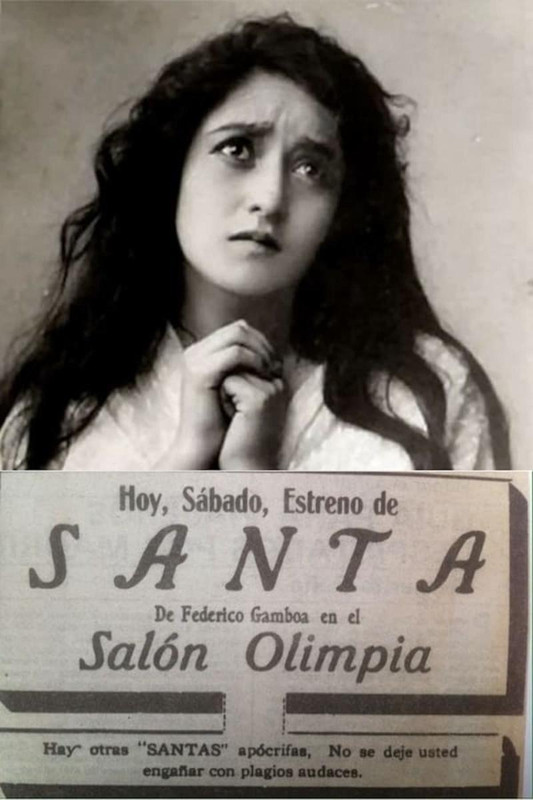
ELENA SANCHEZ VALENZUELA
This film would be remade as Mexico's first feature length sound film in 1932 starring the much more sultry Lupita Tovar who is best known for playing Mina Parker in the Mexican version of "Dracula" and who died recently in 2016. The aforementioned Mimi Derba also appeared in a supporting role. Elena Sanchez Valenzuela (born 1899) has no other screen credits past 1922 although like Derba she may have done stage work, she died in 1950. Attesting to the novel's popularity (or possibly the 1932 film's) in Mexico it would be remade in 1943 and again in 1969 with versions being made in Spain in 1949 and again in 1991. Author Fredrick Gamboa (born 1864) had a long career as a journalist and writer of novels and plays all of which he did while maintaining a career as a diplomat and politician. A supporter of the Diaz regime he opposed the Revolution and ran for President himself in 1913 and lost. Mexican politics of the Revolutionary era was dangerous business with literally every President elected between 1911 and 1934 either being assassinated or fleeing the country and Gamboa himself would spend a few years in Cuba before returning to Mexico where his books and plays obviously remained popular at least and he resumed writing and stayed out of politics. He died there in 1939.
~~~~~~~~~~~~~~~~~~~~~~~~~~~~~~~~~~~~~
Although Mexican films showed an influence with those of European countries like Italy and France they would also show an influence with Hollywood, especially westerns. This is hardly a surprise as Mexico of course has its own history of a plains cowboy culture with its tropes of bandits, gunmen, horses and colourful costumes, albeit with their own distinctive Latin flair. There was a related sub-genre of films occurring in both countries of Train Films, with stories based around the trains that were so important in opening up the plains and uniting the coasts. In Mexico the trains took on a larger significance during the various revolutions and civil wars as various armies fought for control of the rail lines and used them to transport troops. An attack on a government train is believed to have been included in the now lost Pancho Villa film. These films usually revolved around train robbers and gave an excuse to string together fights and chases with death defying stunts perhaps with a perfunctory romance thrown in.
"EL TREN FANTASMA" (1926);
Directed by Gabriel Garcia Moreno
Cast;
Carlos Villatoro ~ Adolfo Mariel
Carlita Ibanez ~ Helen (Elena) Del Bosque
Manuel De Los Rios ~ Paco Mendoza (AKA El Rubi)
Angelita Ibanez ~ Carmelita (Carmela)
Guillermo Pacheco ~ Chango
Vecino De Orzaba ~ Don Thomas Del Bosque
Rafael Ariza ~ Bocachula
Plot synopsis (spoiler alert); Adolfo Mariel is an agent of the railroad is in town charged with investgating a series of train robberies. Don Thomas Del Bosque is the local train dispatcher, Helen is his pretty daughter and Paco Menoza is a friend of the Bosque family with romantic designs on Helen. Besides the train robberies, there has also been a series of business robberies committed by a daring gang of cat burglars led by the mysterious "Ruby" who dresses in black leather and wears a mask. It turns out that Ruby is actually Paco unbeknownst to the Bosques and his lieutenant is Bocachula, an engineer with the railroad. While Adolfo is in town Paco's gang robs a brewery and escapes with the money. Back at the bandit's den the gang spend their time drinking, gambling and partying while Paco has to placate Carmela, his jealous and demanding mistress who he has tired of before returning to his respectable double life in the city where he has become obsessed with Helen who is in turn enamoured with Adolfo. Paco is approached to fill in for a Matador who can not attend the next bullfight and takes the gig seeking to impress Helen who leaves a note explaining his actions. At the bullfight the next day Helen attends with Adolfo where Paco is injured. Helen is touched by Paco's romantic gesture and tells Adolfo that they should remain as friends however Paco is unaware of this. Both return to the railyard where Paco's gang have arranged to kidnap Helen. The gang steals a train and grabs Helen, causing Don Tomas. Adolfo gives chase and jumps on board the train but after a fight he is thrown off however he is able to rescue Don Tomas from being crushed by the train by pulling him off the tracks in the nick of time. Helen is taken back to the Bandit's Den where Paco arranges a fake rescue attempt in order to impress Helen who is still unaware that he is actually the gang leader. After the fake "rescue" Paco returns Helen to her father at the railyard where hs treated as a hero. Carmella, jealous of being tossed aside for Helen along with her younger brother Chango who resents being bullied by the gang conspire to take revenge on Paco and his gang and Chango sneaks into the railyard and brings Adolfo back to the Bandit;s Den where Carmella is now being held prisoner and she reveals to him that Paco is in fact Ruby the Gang Leader. Paco arrives and Adolfo is forced to fight his way out of the gang's hideout and escape but after a chase he is caught and brought back. When Adolfo's pockets are searched Paco discovers the warrants deputizing him to investigate the gang. Paco decides to take Helen and flee to the mountains and he has Adolfo tied up and left behind along with one of his gang and steals another train with Helen who reluctantly agrees to marry him to save Adolfo. Also left behind are Carmella and Chango who help Adolfo escape and he then goes after Paco. Carmella and the remaining gang members decide to burn down the hideout and flee to the gang's hideout. Meanwhile Paco has lost control of the train he and Helen are on and it becomes a runaway. Paco jumps from the train safely but Helen is unable to and he helplessly watches the runaway train speed away. Adolfo has given chase on horseback and is able to jump on board with Helen and the two go inside as the train speeds through the mountains. When it tries to cross a bridge it derails and crashes to the canyon below. Note that a portion of the film is missing here but it appears that Adolfo and Helen escaped the train and returned to town where they are to be married. Paco is unaware of any of this and believes Helen to be dead. Upset he flees to the gang's mountain hideout where Carmella returns to console him. Meanwhile the bandit gang, bored and frustrated by Paco's inactivity have been taken over by Bocachula and return to robberies and kidnap an uncle of Helen's who is on his way to their wedding and then discover that she and Adolfo are in fact alive and to be married. As the newlyweds leave by train accompanied by Chango. Paco is willing to let them go but the gang rebel and decide to take revenge by dynamiting the train tracks. Paco and Carmella decide to escape along with the Uncle and warn about the impending bombing but escaping Carmella is shot dead. Paco makes it out and finds Bocachula setting the bomb and after fighting him he manages to defuse the bomb but is struck and killed by the train. The train stops and his body is found but nobody knows about the bomb he defused and he is simply dismissed as a crazy man and the train continues on with Helen and Adolfo. Finito.
~~~~~~~~~~~~~~~~~~~~~~~~~~~~~~~~~~~~~~~~~~~~~~~~~
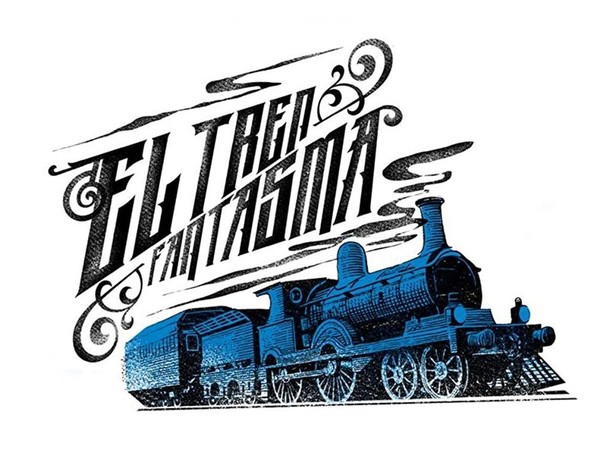
This is a fairly standard film of the odd western subgenre of train heist films that were made in the silent and early sound era in America as well, the plot makes little sense with plenty of loopholes (certain characters keep switching sides with little or no explanation) and is basically an excuse to string together a bunch of stunts and chase scenes along with lots of shots of trains both still and moving and the acting is competent if undistinguished. As always there are a few interesting or unique moments however. Once again we have another bullfight scene that has little real relationship to the plot. Of the four films we've seen thus only "Tepeyec", set in the sixteenth century, did not have bullfight scenes, although given the few Mexican silents that survive that may not be an entirely representative sample. It's also safe to assume no Hollywood western would have had the bandits taking time out to do a Mexican Hat Dance. Some of the bandito's costumes have an authentic Mexican look adding some local colour. Mostly what we get are lots of trains with some of the stunts looking genuinely dangerous which they probably were and it's likely the director Gabriel Garcia Moreno must have seen Buster Keaton's "The General" and took notes. Meanwhile some of the stationary shots of the engines in the railyard show some of the complex machinery in loving detail including a shot of an engineer doing maintenance and climbing through the network of pipes and cables in a shot that could have been in Chaplin's "Modern Times" or Fritz Lang's "Metropolis". The brief scene of El Ruby robbing the brewery office wearing a black leather outfit and mask seem inspired by French bandit films like "Fantomas" and "Les Vampires" rather than American westerns but that subplot is simply discarded and never mentioned again so the film can get to the real point of the film. That being more trains. And an extended chase and fight sequence as Adolfo attempts an escape climbing walls, jumping off roofs and tossing bad guys into a pool Douglas Fairbanks style. These scenes are better shot than the similar scenes in "El Automovil Gris". Like that film director Moreno incorporated some newsreel footage, in this case that of the bullfight.
The woman characters are distinctly modern with their fashionable bobbed flapper hair and are not merely damsels in distress, being able to take some decisions of their own although usually in a subordinate role. The two main male characters also look modern, especially Adolfo in his sweater and tie looking more like a college sophomore than a western lawman. The male leads are more bland than the women with Paco being an unimpressive villain. The ending is unusually bittersweet with both Paco and Carmella dying to save the train and redeeming themselves but nobody knows that they did and the train simply pulls away with Adolfo and Helen (and Chango who is also on the train for some reason) oblivious to their sacrifice as the film ends. That is at least in the moment, whenever the uncle who escaped with them makes it back to town he will presumably tell the authorities the whole story. We are missing a few minutes near the end which does make the climax a little choppy and leaves some loose ends but most of the film appears complete with the missing scenes (certainly less than a reel) being fleshed out with a few inter-titles and stills adequately enough. This is hardly a great or memorable film. It doesn't have the ambitious scope of "El Autumovil Gris" or the literary ambitions, emotionalism and attempts at social relevance of "Santa" or the somber religious and historical message of "Tepeyac" but it's a competent example of genre film done with some energy and a distinct sense of style.
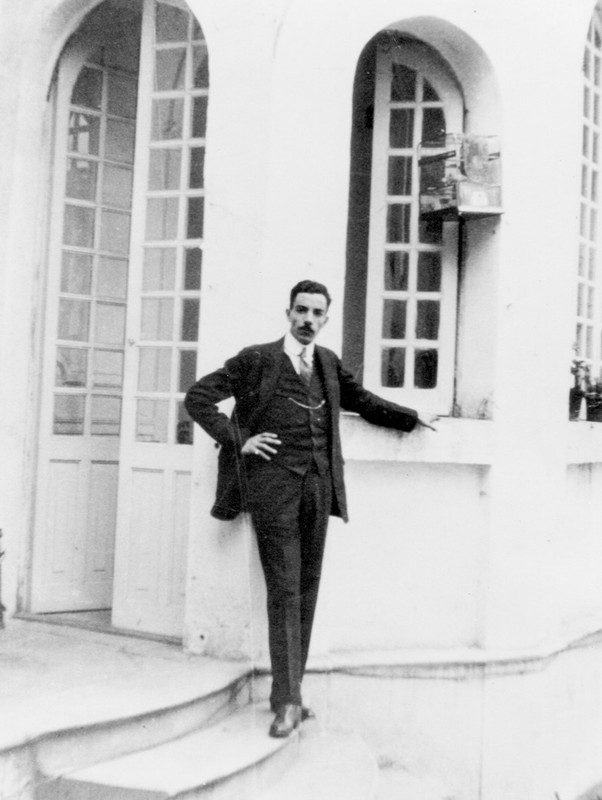
GABRIEL GARCIA MORENO
Most of the cast of this film are obscure and seem to have few if any other credits although some may have had stage careers. The exception being Carlos Villatoro as Adolpfo who made several movies into the sound era before becoming an assistant director and working into the 1960's including several monster movies and a 1958 Pancho Villa biopic which was a Mexican-US production starring Cesar Romero and Brain Keith.There are so few details that I do not know if Carlita and Angelita Ibanez who played Helen and Carmella were related although it's not an uncommon name.
===========================================
Gabriel Garcia Moreno, who directed "El Tren Fantasma" was not one Mexico's most prolific directors but he was perhaps the luckiest with another of his films surviving to the present day. This would be another crime film but while "El Tren Fantasma" was a simple escapist heist film the next would attempt a more serious tone while using dome of the same cast.
"EL PUNO EL HIERO" (1927);
Directed by Gabriel Garcia Moreno
Cast;
Carlos Villatoro ~ Antonio
Hortencia Valencia ~ Laura
Octavio Valencia ~ Carlos
Lupe Bonilla ~ Esther
Manuel de los Rios ~ Dr Ortiz
Mauel Carrillo ~ Pete
Guillermo Pacheco ~ Jackie
Carlos is a heroin addict and his girl Laura is a rancher who is fed up with his behavior. She takes him to a lecture by Dr Oriz who is an expert on addiction. As he talks, footage of a modern hospital and patients being treated is shown. Also at the lecture is Antonio, a gangster and local girl Esther who he flirts with and who agrees to go on a date with him. Antonio's gang is called the Bats who wear dark hoods and they are involved with a series of rustlings and hijackings including ones that target Laura's ranchero. During one such hijacking Pete, one of Laura's drivers escapes and tells Laura who recruits a posse and goes after the gang who escape. Unknown to everyone Antonio actually works as a respectable foreman on Laura's ranch. He and Esther meet up for lunch and he charms her but when he discovers he has no cash he picks her pocket to pay for lunch which she doesn't notice. Meanwhile Jackie is a young boy who fantasizes about being a detective and makes plans with Pete to catch the Bat. The Hawk is another gangster who suspects Antonio is the Bat and blackmails him into helping him smuggle heroin. The drug gang is led by the Hawk and they operate out of a hideout run by an older character called Fagin. Elsa is also a member of the gang as a prostitute and an addict. The Hawk introduces Antonio to Fagin and Esther unaware that they already know each other which they do not reveal although Fagin suspects. Laura visits Dr Otiz for advice on curing Carlos of his addiction. He promises his help while secretly plotting to win her over. He is also secretly supplying drugs to the smugglers. The Bat returns to his own hideout where his gang have stashed a kidnap victim who they force to sign over his property. Pete and Jackie have been taking the Bat to his hideout where they are spotted and a gunfight breaks out. Pete shoots one of the gang and dons his black hooded costume to infiltrate the gang but is accidently thwarted by Jackie who mistakes him for a gang member. Returning to the city Pete and Jackie stumble upon one of the drug smugglers who is being robbed by some of his customers who take the drugs and speed off with Pete and Jackie in pursuit. They track the gang back to Fagin's hideout where Carlos also is. Dr Ortiz arrives with Laura who is unaware of the club's purpose or Dr Ortiz's role in the drug trade. Laura finds Carlos passed out and Dr Ortiz uses this to try and convince Laura to leave Carlos. Antonio recognizes Laura and tries to rescue her and there is a fight between the Bat's gang and Ortiz's who pulls a gun and escapes. Antonio pursuse Ortiz and he is in turn tracked by Pete and Jackie. Fagin returns to the club to find Laura and Esther with the unconscious Carlos. He orders the Hawk to give Carlos an overdose while he attacks Laura but Antonio returns and attacks Fagin. Just as Antonio figures out that Fagin is actually Ortiz, Antonio is knocked out. Fagin drops Antonio and Esther through a trap door into a sewer and exits after ordering the Hawk to dispose of Laura and Carlos. Antonio and Esther escape from the sewer and are found by Pete and Jackie who he tells Dr Oriz's secret identity to. They capture Ortiz and the Hawk releases Laura and Carlos. Later Peter and Esther and Carlos and Laura are reunited at the beach where Carlos announces he is free of drugs and vows to campaign to educate the public about the dangers of drugs. Finis.
~~~~~~~~~~~~~~~~~~~~~~~~~~~~~~~~~~~~~~~~
Like the "Grey Automobile" this was originally an eight part serial later edited down to a full length film this might explain it's somewhat disjointed and repetitive nature. It's also possible some footage was left out.
Once again we have another example of conservative Mexico giving a far more modern and graphic treatment of a serious social issue than would have been done in contemporary Hollywood or even well into the sound era. The issue of drug addiction was occasionally dealt with in Hollywood but never as seriously or graphically as here where Carlos is actually shown shooting up in the opening scene.This makes for an odd film which is partly a gritty modern film about drug addiction and crime, partly an educational anti-drug film and partly a standard western with characters wearing cowboy outfits riding horses and shooting guns. The different parts of the film don't really gel with the sleazy realism of the drug den contrasting wildly with the western outlaw scenes seeming to belong in another kid friendly movie perhaps starring Tom Mix. Like most low budget westerns of the era the plot is simplistic, unrealistic and makes little sense. The characters are two dimensional and not too bright and the action and fight scenes are poorly staged and shot. However the scenes of drug use are explicit and would have been shocking to an American audience had they seen them. The scenes of Fagin's sleazy lair and drug den looks out of one of the notorious German Street films like "Die Strasse", "The Joyless Street" and "The Tragedy Of The Streets" (which I wrote about here) albiet with some Mexican touches. The character of Elsa also mirrors similar prostitute characters in the Street Films usually played by Asta Neilsen however unlike Asta's characters (or the previous character of Santa) with Elsa her prostitute status is only implied and unlike Asta or Santa she has a happy ending. As with his previous film the two women characters while secondary are not mere damsels in distress eith with Laura being a successful ranch owner. The men also look fairly modern and avoid any stereotypes about Mexican Banditos.
It's hard to tell if the anti-drug scenes were probably included as a moral message to get past the Church censors what would otherwise be a conventional if odd western influenced crime film or if the filmmakers sincerely wanted to make an anti-drug film and came up with a rather perfunctory crime story to sell the story. At any rate the end results have more impact than the American anti-drug exploitation films of the 1930's like the notorious "Reefer Madness" which would become unintentional camp classics. While this film is somewhat simplistic, disjointed and diffuse it takes its basic message seriously and it's not cheap exploitation nor is it camp.
With the coming of sound director Moreno moved to Hollywood where he found steady work in the technical side at Hal Roach Studios in the art department making backgrounds and miniatures. In 1937 he returned, starting his own film lab testing colour films as well as becoming a partner in founding another film studio. However quarrelling with his partners led to his leaving and he never made another film dying in 1943 aged 63,
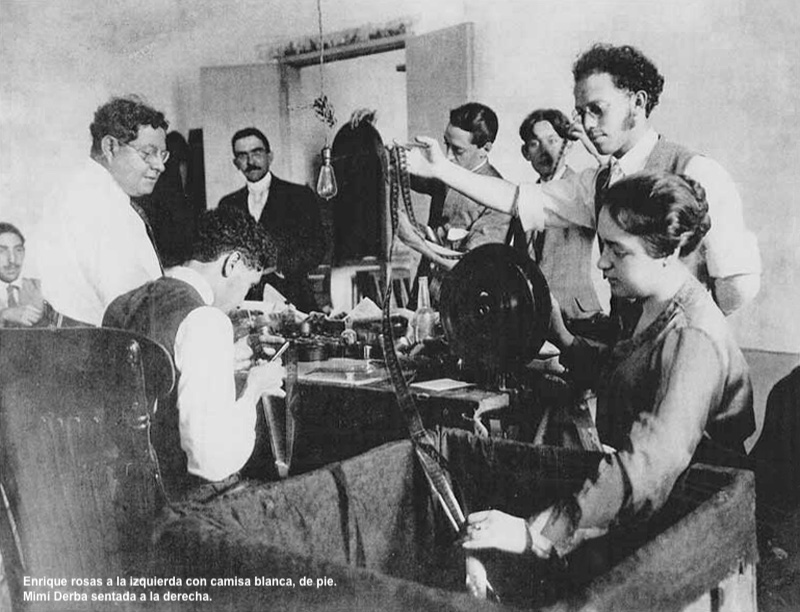
In the coming sound era Mexican society would become more stable and the Mexican film industry would enter what is now called it's "Golden Age" with Mexico becoming the leading film producer of the Spanish speaking world especially as first Spain itself retreated into political chaos, civil war and Fascist dictatorship then after WW2 the other obvious sizable rival Argentina headed into its own period of instability and dictatorship. Probably the best known Mexican film of the sound era was the much admired 1931 version of "Dracula" which many critics consider to be superior to the English version film at the same time using the same sets. Later in the 1950's and 60's Mexico would gain cult audiences for its odd low budget monster films and even odder genre of Luchadore (masked wrestler) superhero films.

